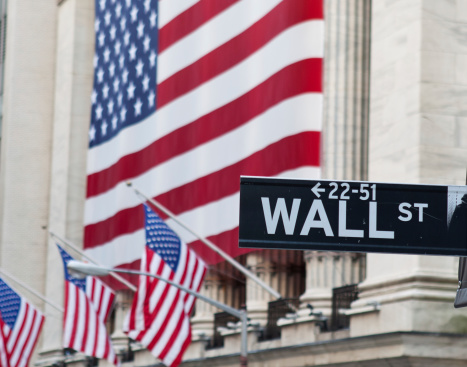
©r_drewek/ISTOCK/THINKSTOCK
In the most divisive, adversarial and combative presidential election in modern history, the two campaigns have finally identified a common enemy – Wall Street.
This is not to say the two campaigns (or parties) have come to an overall agreement on their financial platforms -- far from it. On Dodd-Frank, Trump wants to repeal most of it, or, as he puts it: “it will be close to dismantling.” How close?
When House Financial Services Committee Chairman Jeb Hensarling introduced a less-draconian bill that gives banks a choice between complying with Dodd-Frank or accepting much tougher capital requirements, repeals the Volker rule and Financial Stability Oversight Board authority, and brings to heel the Consumer Financial Protection Bureau (CFPB), the Trump campaign notably refrained from commenting.
The Republican platform would abolish the CFPB, or subject it to the Congressional appropriations process (rather than remaining independently funded by the Federal Reserve). Furthermore, the platform would require that “[a]ny settlements arising from statutory violations by financial institutions must be used to make whole the harmed consumers, with any remaining proceeds given to the general Treasury.” It also supports legislation requiring big bank failures to be resolved through the bankruptcy code.
Clinton, in contrast, has vowed to defend and enhance Dodd-Frank (including the independence of the CFPB). Specifically, she would:
- Levy a “systemic risk” fee on the largest banks (> $50 billion in assets), that would be graduated depending on the size of debt (excluding insured deposits), especially short-term debt, and to impose higher capital requirements if needed;
- Close the Volcker Rule loophole that permits banks to invest through hedge funds;
- Expand as needed federal government authorities to reorganize or break up the biggest financial institutions that cannot be managed effectively;
- Reinstate recently repealed credit swap and derivative rules at publically funded banks (it is unclear whether these include reforms benefiting non-financial derivative end-users);
- Strengthen oversight of the shadow banking sector, such as hedge funds, private equity funds, insurance companies and investment banks; and
- Increase leverage and liquidity requirements for broker-dealers and impose strict margin requirements on short-term borrowing.
Beyond Dodd-Frank, Clinton would significantly expand the statute of limitations with respect to financial crimes, increase funding for regulatory enforcement and financial crime investigation, institute claw-back requirements for executive bonuses at institutions that suffer crippling losses, impose a financial transaction tax designed to discourage high-frequency trading, and have the IRS tax carried interest as regular income.
Far from clamping down on financial investigations and rules enforcement, Trump has criticized bankers for settling federal lawsuits stemming from the financial collapse. He once disparaged Jamie Dimon of J.P. Morgan for agreeing to settle a 2013 mortgage-related federal suit. With respect to regulations, he supports passage of the Regulations from the Executive in Need of Scrutiny (REINS) Act that "would require any executive branch rule or regulation with an annual economic impact of $100 million or more to come before Congress for an up-or-down vote before being enacted."
In particular, the Republican platform wants to lower regulations on community banks to increase financing for small businesses. It also ends the government’s use of disparate impact theory in enforcing anti-discrimination laws with regard to lending. Finally, Trump would tax carried interest at the personal or business tax rate, but he would so lower income rates to render the issue moot.
Source of Agreement
Given the sharp differences between the candidates and their platforms with respect to financial policy, it is surprising both advocate the reinstatement of the 1933 Glass-Steagall Act that prohibited commercial banks, investment banks and insurance companies from offering the services of, or combining with, any of the other two types of institutions.
Glass-Steagall was largely overturned by the 1999 Gramm-Leach-Bliley Act (GLBA) to pave the way for the formation of financial institutions modeled after European universal banks. It is noteworthy that GLBA was passed by a significant bipartisan majority in a Republican-controlled Congress and signed by President Bill Clinton.
To be clear, Democrats want to pass a “modernized” version of the Glass-Steagall Act that would cover the so-called shadow banking sector as well as the banking sector. Clinton contends the existence of Glass-Steagall would not have prevented the collapse of Lehman Brothers and its aftermath. Under the Democrats’ proposal, Glass-Steagall would be passed on top of Dodd-Frank, not as a replacement.
Trump supports the bill, according to campaign manager Paul Manafort, because “We believe that the Obama-Clinton years have passed legislation that has been favorable to the big banks, which is one of the reasons why you see all of the Wall Street money going to her.”
I suspect, if canvassed, bankers would not consider Dodd-Frank “favorable to the big banks”. Nonetheless, despite financial policies that differ in almost every other respect, both campaigns now support reinstating Glass-Steagall. Look out, Wall Street.